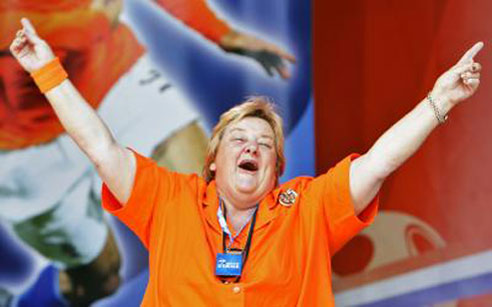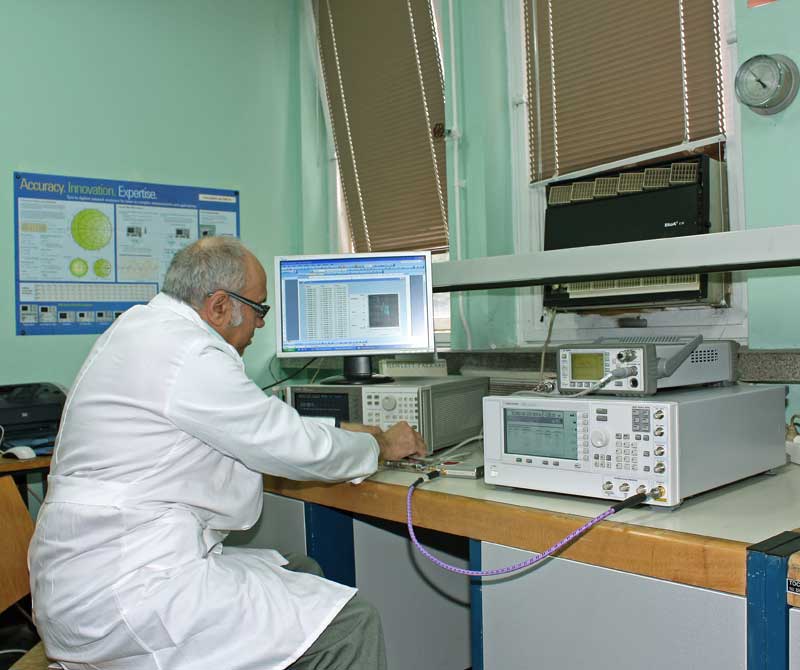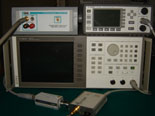01 Military Attache requires Liaison Officer
 •
by
•
by Starac202

Dear citizens of the eNetherlands,
I’m thinking about running for a Congressman (my article) and get involved in ePolitics a bit, though I’m very busy, but I need a diversion. I work at night, sleep at day, have to change that.
I was surprised by the possibility of creating a Facebook page, while I was in the middle of reorganizing my desktop PC, just bought laptop as well to make it easier. Have to redirect Data to Data Partition and make a Backup for the Beginning!
I’m not striving to any popularity with my FB page, certainly not in the beginning, but it’s a perfect tool for me which I’m now combining with eRepublik Newspaper…
Quality above quantity!
I’ve laid a main cable, now I’m going slowly to add branches.
I’m exploring further
😉
Article will be updated in real time as usual. Links will be added.
😉

***
Liaison Officer required
I need a Liaison Officer, doesn’t have to be in my MU.
PROBLEM SOLVED
A liaison officer is a person who liaises between two organizations to communicate and coordinate their activities. Generally, liaison officers are used to achieve the best utilization of resources or employment of services of one organization by another. Liaison officers often provide technical or subject matter expertise of their parent organization. Usually an organization embeds a liaison officer into another organization to provide face-to-face coordination.
Military Liaison Officers (LNOs)
In the military, liaison officers may coordinate activities to protect units from collateral damage. They also work to achieve mutual understanding or unity of effort among disparate groups.[1] For incidence or disaster management, liaison officers serve as the primary contact for agencies responding to the situation.
*****

*****
A Division Alpha Tester | Special Operation Forces (SOF) Global Security
Commandant and MP Supervisor (67 years old now. MP sins 19)
- Instructor Professor Milan Vukelić | Cobras; Special Brigade etc.
Honourable member of my Facebook group SOF Global Security
The First Serbian Vidovdan Knight
*
Legendary Special Operations Forces (SOF) Instructors
Professors Milan Vukelić and Dusan Jakovljević
at Vidovdan Sabor of Serbian Knights 2015 (video)
*
Serbian Armed Forces www.vs.rs
General Staff Units | the Guard | Special-purpose Compounds |
MP Special Purpose Battalion Cobras
I HAVE TO, I CAN, I WILL | IK MOET, IK KAN, IK WIL | ЈА МОРАМ, ЈА МОГУ, ЈА ХОЋУ
***** I have to translate this:
Professor in physical education Milan Vukelic, Captain I Class in retirement, born in 1948.
Black belt 3rd Day for Judo, 5th Day for jiu-jitsu… to be continued
***
Profesor fizicke kulture, Milan I. Vukelic, kapetan I klase u penziji, rodjen 1948. godine, nosilac crnog pojasa 3. Dan za dzudo, 5. Dan za dzu-dzicu, visi sportski trener za dzudo i instruktor alpinistickog veranja, dzudo sportom se poceo baviti 1965. godine u Podoficirskoj skoli u Sarajevu.
*****
About Global Security
International security, also called global security, refers to the amalgamation of measures taken by states and international organizations, such as the United Nations, European Union, Association of Southeast Asian Nations, and others, to ensure mutual survival and safety. These measures include military action and diplomatic agreements such as treaties and conventions. International and national security are invariably linked. International security is national security or state security in the global arena.
***
International Military Cooperation
- International Security
- Force Interoperability
NATO

***
Partnership for Peace (PfP)
Partnership tools
***
Command Company | MU Intelligence-reconnaissance
Starac202
Military attaché | Militair attaché | Vojni izaslanik
***

15.03.2016 Defence Minister received the Defence Attachés
Defence Minister Zoran Djordjevic received today the first group of defence attachés of the Republic of Serbia within the framework of the regular consultations, analysis of work and the expert and specialist training.
At the meeting, the work of the offices of defence attachés of the Republic of Serbia in 2015 was analyzed.
Defence attachés engaged in the Russian Federation, Germany, Turkey, Belgium, Hungary, Romania, Croatia, Macedonia and Israel will be received today also by the Serbian Armed Forces Chief of General Staff General Ljubisa Dikovic.
***

Een militair attaché[1] , ook wel defensie-attaché, is een militair, meestal een officier, die aan een ambassade of een internationale organisatie (bijvoorbeeld de OVSE of de NAVO) is verbonden. Net zoals andere diplomaten genieten militair attachés diplomatieke onschendbaarheid. Dit is vastgelegd in het Verdrag van Wenen inzake diplomatiek verkeer van 1961. In dat verdrag staat ook dat ontvangende staat mag eisen dat de namen van militaire attachés vooraf ter goedkeuring worden voorgelegd.
De militair attaché vertegenwoordigt de strijdkrachten en hun leiding in de ontvangende staat, en fungeert daar als contactpersoon voor het Ministerie van Defensie en haar krijgsmacht. Hij verzamelt en rapporteert gegevens die hij vanuit politiek, militair, sociaal-economisch, technisch of historisch oogpunt van belang acht. Ook onderhoudt de militair attaché nauw contact met verschillende vertegenwoordigers van de defensieorganisatie van het gastland en met andere buitenlandse militair attachés die in het gastland geaccrediteerd zijn. [2] De belangen van de militairen die zich voor zijn land en in dienstverband in zijn ambtsgebied bevinden worden door hem behartigd.
Militair attachés zijn niet op iedere ambassade te vinden, soms zijn ze voor meer landen in dezelfde regio geaccrediteerd[3].
De grenzen tussen het op wettige wijze vergaren van belangrijke informatie en ongeoorloofde activiteiten, in het bijzonder spionage, kunnen niet altijd duidelijk worden getrokken. Het komt voor dat militair attachés en/of hun diplomatieke medewerkers worden uitgewezen op verdenking van spionage.[4]

***
Staff (military)
A military staff (often referred to as General Staff, Army Staff, Navy Staff or Air Staff within the individual services) is a group of officers and enlisted personnel that are responsible for the administrative, operational and logistical needs of its unit. It provides bi-directional flow of information between a commanding officer and subordinate military units. A staff also provides an executive function where it filters information needed by the commander or shunts unnecessary information.
***

Boomstructuur
Een boomstructuur is een hiërarchische structuur, die onder andere gebruikt wordt om taxonomische kennis mee in te delen. Als hij schematisch wordt getekend doet het aan een boom denken; dit wordt een 'dendrogram' genoemd. Het dendrogram kan ook op zijn kop of op zijn kant staan. Een bekend voorbeeld van een boomstructuur is een stamboom.
De elementen van een boomstructuur worden knopen genoemd en zijn logisch verbonden door middel van takken.
De relaties tussen de knopen wordt aangeduid met de namen van familierelaties:
•De knoop zonder ouders heet de wortel ('root' in het Engels).
•Een in de hiërarchie direct boven een knoop gelegen knoop die dichter bij de root is, heet een ouder.
•Een knoop met een ouder heet een kind.
•Knopen die dezelfde ouder hebben zijn broers of zussen.
•Een knoop zonder kinderen wordt blad genoemd.
In de illustratie is 'encyclopedia' (encyclopedie) de wortel, maar ook de ouder van twee kinderen, 'science' (wetenschap) en 'culture' (cultuur). Deze twee kinderen zijn broers/zussen van elkaar. 'Science', 'art' (kunsten) en 'craft' (ambachten) zijn de bladeren.
Of een wetenschap vrouwelijke of mannelijke relatienamen gebruikt, verschilt per discipline. De informatica gebruikte aanvankelijk mannelijke relatienamen. Het verhaal gaat dat in protest hiertegen vrouwelijke studenten van Noam Chomsky vrouwelijke relatienamen gingen gebruiken voor diens generatieve taalkunde. Hierom worden in de taalkunde vrouwelijke relatienamen gebruikt.
***

Captain (armed forces)
The army rank of captain (from the French capitaine) is a commissioned officer rank historically corresponding to the command of a company of soldiers. The rank is also used by some air forces and marine forces. Today, a captain is typically either the commander or second-in-command of a company or artillery battery (or United States Army cavalry troop or Commonwealth squadron). In the Chinese People's Liberation Army, a captain may also command a company, or be the second-in-command of a battalion.
In NATO countries, the rank of captain is described by the code OF-2 and is one rank above an OF-1 (lieutenant or first lieutenant) and one below an OF-3 (major or commandant). The rank of captain is generally considered to be the highest rank a soldier can achieve while remaining in the field.
***
Company is a military unit, typically consisting of 80–250 soldiers and usually commanded by a major or a captain. Most companies are formed of three to six platoons, although the exact number may vary by country, unit type, and structure. Several companies are grouped to form a Battalion or Regiment, the latter of which is sometimes formed by several battalions.
Certain sub-units were raised as independent companies that reported to no higher unit headquarters.

Standard NATO code for a friendly infantry company
***
Regiment is a military unit. Their role and size varies markedly, depending on the country and the arm of service.
In Medieval Europe, the term "regiment" denoted any large body of front-line soldiers,[1] recruited or conscripted in one geographical area, by a leader who was often also the feudal lord of the soldiers.
By the 17th Century, a full-strength regiment was usually about a thousand personnel, and was usually commanded by a colonel.
***
Brigade is a major tactical military formation that is typically composed of three to six battalions plus supporting elements. It is roughly equivalent to an enlarged or reinforced regiment. Two or more brigades may constitute a Division.
***
**
*

A typical role for signals is in signal processing. A common example is signal transmission between different locations. The embodiment of a signal in electrical form is made by a transducer that converts the signal from its original form to a waveform expressed as a current (I) or a voltage (V), or an electromagnetic waveform, for example, an optical signal or radio transmission. Once expressed as an electronic signal, the signal is available for further processing by electrical devices such as electronic amplifiers and electronic filters, and can be transmitted to a remote location by electronic transmitters and received using electronic receivers.
*
Signal
**
Network
***
Command
****
😉
😉
😉
***

Starac202 Assembly language programmer
Telephone exchange tester
1979 - 1980 Iskratel IP2 Belgrade
***
Signal (electrical engineering)


***
Starac202 General-purpose Machine Gunner
Reconnaissance Squad
Command Company | Artillery Regiment
1980 - 1981 Yugoslav People's Army

***

Starac202 INDEPENDENT technical ASSOCIATE
Serbian Armed Forces | General Staff | Planning and Development Department (J-5) |
Technical Test Center | DEPARTMENT OF METROLOGY |
THE PRIMARY METROLOGY LABORATORY FOR NON-ELECTRICAL MEASURES, THE ML-03
1982 - 1985 Yugoslav People's Army

***

Starac202 Zwakstroom monteur
1991 - 1992 Siemens IPG Nederland
tot op heden arbeidsongeschikt
🙁
**** Netherlands Chief of Defence - Commandant der Strijdkrachten
**** Serbian Chief of General Staff - Начелник Генералштаба Војске Србије

Intelligence-reconnaissance | A Division Alpha Tester
Yours,
Old Man | Starac202 | Alpha Tester Media
Military attaché | Militair attaché | Vojni izaslanik
😉

Special Forces in Business
Commando Business Club



Comments